In the previous blog post, we looked at what mindfulness is and why it’s so good for you. It’s useful to remember that practising mindfulness does not have to mean sitting in meditation for hours.
In fact, you can practice mindfulness by adding a bit of extra awareness to activities you already do every day!
So, here are five simple mindfulness practices you can do to enhance your well being and feel calm, steady, and fabulous.
Mindful Rising
Start your day mindfully from the moment you wake up. Instead of hauling yourself out of bed, bleary eyed and dreading the day, take a moment when you wake up to welcome the morning.
Notice that you have woken up. Notice the quality of the light in the room, and any sounds of smells that you can sense. Thank your body for waking. And then, with conscious awareness of each muscle movement that works to shift your body, sit up.Place your feet firmly on the ground and notice the sensation of feet connecting with floor.
Before you stand up, activate the feet; press the ball and the feel of each foot into the floor, and spread the toes. Then stand up with focused awareness of the way the muscles in your legs work to straighten and strengthen them.
Stand upright for a moment. Take a deep breath in and then exhale fully. Then go about your day.
The 3 minute breathing space
The 3 minute breathing space exercise has 3 components, each of which lasts approximately 1 minute. However, when you're in need of speedy stress relief you can complete this practice in as little as 3 to 30 seconds.First, pause to notice the breath. Become aware of how the breath feels, and the whole body experience of breathing in and out. You arrive in the present moment and notice the breath. You recognise its effect on every cell of your being. The whole body breathing.
Second, begin to notice other aspects of your physical experience. You broaden the awareness out from the breath, and become aware of what is happening in your own body. This includes physical sensations; the experience of weight and lightness; tightness or openness in muscles; any pain or discomfort you might be feeling; and the position of your body in space.
Third, expand outwards even more — to notice what is present in this moment, right now. Without trying to change anything, become aware of sounds that you can hear. Scents that meet your awareness. Tastes in your mouth. And then textures; things you can feel with the nerve sensors on your skin. Go further still, and notice what you can see with your eyes.
Observe any emotions that arise. Notice what is. You don't need to change anything; simply observe. And then you're ready to continue with your day!Self Body Scan
To focus more deeply on the body, you can practice a self body scan. You can do this anywhere and in any posture — whether you’re lying on your back, sitting at your desk, standing on a commuter train, or anything in between.
Start with the feet and work upwards.
Without trying to move or alter the sensations you’re feeling, notice:
The feet, and then the ankles
The shins and calves, and then the knees
The thighs, front and back
The buttocks and hips
The fingers and hands, and then the wrists
The forearms and elbows
The upper arms
The abdomen; ribcage; and then the chest
The front of the shoulders; tops of the shoulders; and the back of the shoulders
The upper back; mid back; and then the lower back
The two sides of the waist
The throat
The chin, and the jaw
The face; and the right ear, then the left
The forehead
The crown of the head; the back of the head; and finally, the back of the neck.
The whole body, the whole body, the whole body
This process doesn’t have to take a long time, although you can do it as slowly as you wish. By simply noticing the body you immediately allow it to relax and settle. Tension dissipates.
Mindful Seeing
What can you see?Notice.
Sit or stand still and become aware of everything within your field of vision. Notice shapes, colours, and any movement that catches your eye. Notice objects in clarity.
Spend 30 seconds to 1 minute observing everything you can see. Nothing to change and nothing to solve. Simply noticing.
Mindful Eating
Many of us eat without awareness. We’re busy and food is an afterthought, or something to rush with — a moment of pleasure while our minds are distracted.
But mindful eating allows you to enter the present moment fully, and it improves your digestion. It can even aid in weight loss, because when you eat mindfully you enjoy your food more and are less likely to overeat.
So commit to eating at least one meal mindfully each day. Switch off all digital devices and turn away from all distractions. No TV, no reading; just you and your food.
Eat slowly and notice the tastes and textures of each mouthful. Notice the movement of your hands to move food from your plate into your mouth. Allow each bite to be eaten before you move onto the next.Mindfulness is Magic
Well; no. It’s not magic. It’s scientifically proven to improve the quality of your life and make you feel better every day.
Using these simple techniques to incorporate mindfulness into each day will train the skills of awareness that already exist within you.
Be aware. Be here, in this moment, right now.
If you benefited and enjoyed the blog and would like to…
It's always appreciated.🙏
PS: If you enjoyed this blog click the like button below then share it with those you care for who can also enjoy and benefit from it. 😊

